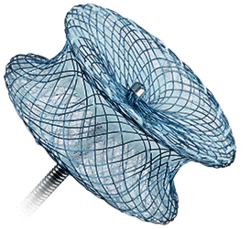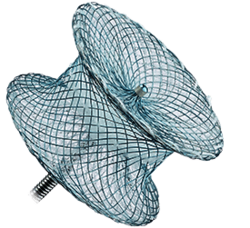VENTRICULAR SEPTAL
DEFECT OCCLUDERS
STRUCTURAL INTERVENTIONS
Ventricular septal defects (VSDs) are the most commonly found congenital
heart defect.2 Our Amplatzer™ VSD portfolio includes occluders specifically
designed to close complex VSDs in patients considered to be too high risk for
standard surgical repair.
Choose between two Amplatzer™ devices for Muscular VSD Closure
Abbott’s 2 muscular VSD occluders allow for either a femoral or an arterial delivery.
Amplatzer™ Muscular VSD Occluder
- Is designed for muscular VSD closure in patients considered to be high risk for standard surgical repair
- Has a 7 mm waist length to accommodate the thickness of the muscular septal wall

Amplatzer™ P.I. Muscular VSD Occluder
- Is designed for the damaged muscular tissue in the septal wall of patients who have had a myocardial infarction
- Has a 10 mm waist length to accommodate the damaged tissue that can occur with septal wall rupture

Connext
Live
- Data on file at Abbott.
- Stout KK, Daniels CJ, Aboulhosn JA, et al. 2018 AHA/ACC Guideline for the Management of Adults with Congenital Heart Disease: a report of the American College of Cardiology/American Heart Association Task Force on Clinical Practice Guidelines. Circulation. 2019;73(12):e81-e192. doi: 10.1161/CIR.0000000000000603.
- Minette MS, Sahn DJ. Ventricular septal defects. Circulation. 2006;114:2190-2197.
- Schlotter F, de Waha S, Eitel I, et al. Interventional post-myocardial infarction ventricular septal defect closure: a systematic review of current evidence. EuroIntervention. 2016;12:94-102.
- Crenshaw BS, Granger CB , Birnbaum Y, et al. Risk factors, angiographic patterns, and outcomes in patients with ventricular septal defect complicating acute myocardial infarction. Circulation. 2000;101(1):27-32.
- Amplatzer Post-infarct Muscular VSD Occluder Instructions for Use.


